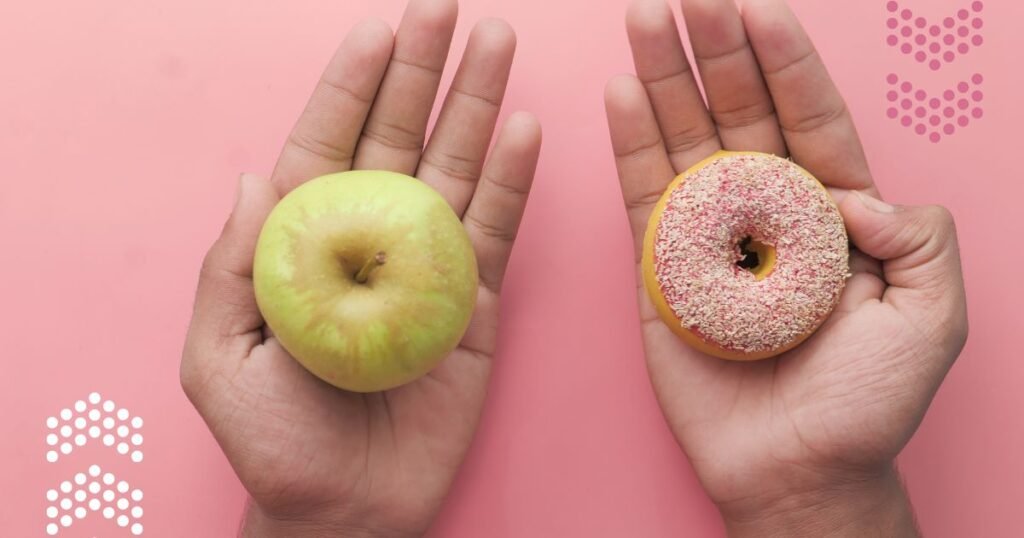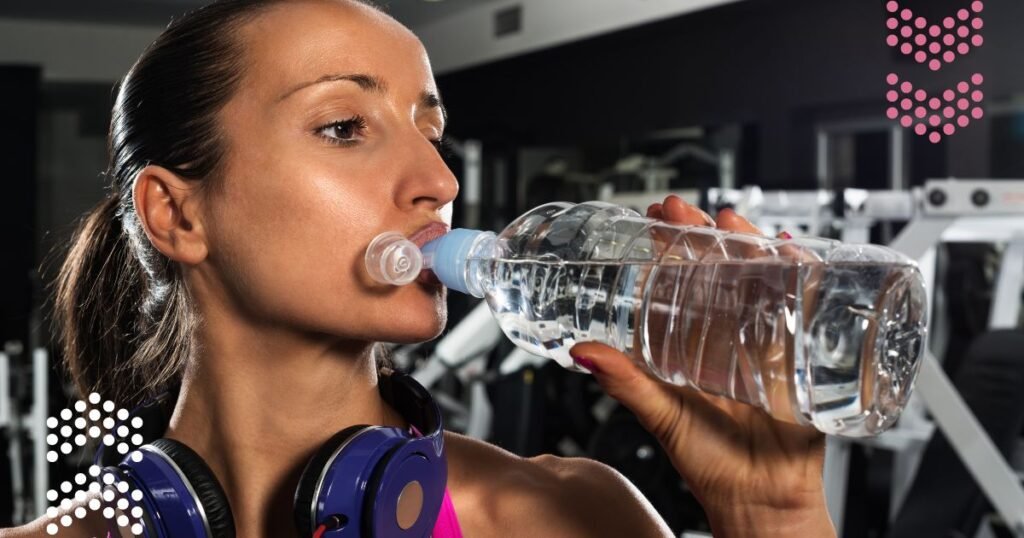How BMR Changes with Age and Weight Loss in Women: A Comprehensive Guide
Introduction
Understanding your Basal Metabolic Rate (BMR) is key to effective weight management and overall health for women. BMR refers to the number of calories your body burns at rest to maintain essential functions like breathing, blood circulation, and temperature regulation.
It is the foundation of understanding how much energy your body needs each day.
In this article, we will explore how BMR changes as women age and undergo weight loss. These changes can have significant implications for maintaining or losing weight, especially during different life stages. Additionally, we’ll provide actionable tips on how to maintain a healthy metabolism while using ShapioX’s resources to achieve long-term fitness and wellness goals.
What is Basal Metabolic Rate (BMR)?
Definition
BMR represents the energy your body needs to perform vital functions such as breathing, digesting food, and maintaining heart rate. Essentially, it’s the number of calories you burn while at rest, which makes up the bulk of your daily calorie expenditure. This foundational part of metabolism determines how many calories you can consume without gaining weight.
Factors That Influence BMR
Several factors determine your BMR, including age, sex, weight, muscle mass, and genetics. For women, hormonal changes, especially during puberty, pregnancy, and menopause, also influence metabolic rate. Muscle mass is particularly important because muscle tissue burns more calories than fat, even when at rest. The more muscle you have, the higher your BMR.
Why BMR Matters for Women
For women, understanding BMR is particularly crucial because it changes throughout different life stages. During pregnancy or menopause, women often experience metabolic shifts due to hormonal changes, which can lead to weight gain. Knowing your BMR can help tailor your diet and exercise plan to match your body’s energy needs. It can also provide insight into why weight loss may become more difficult as you age, and how to counteract these challenges effectively.
How Age Affects BMR in Women
BMR Decline with Age
As women age, their BMR naturally declines. This is due to various factors, including the loss of muscle mass, hormonal changes, and a slower overall metabolism. After the age of 30, women’s BMR begins to drop at a rate of about 1-2% per decade. This decline can lead to gradual weight gain if caloric intake and physical activity are not adjusted accordingly.
Decade-by-Decade Breakdown
In Your 20s and 30s
During your 20s and 30s, your BMR is generally at its highest. Your body is typically more efficient at burning calories, and muscle mass tends to be higher. However, this period can also be when the first signs of slowing metabolism appear, especially if you reduce physical activity or neglect strength training. While the decline is not drastic, it’s essential to develop healthy habits during this stage to support your metabolism as you age.
In Your 40s and 50s
During your 40s and 50s, especially around perimenopause and menopause, BMR tends to decline more rapidly. This is due to a combination of hormonal changes, particularly the reduction in estrogen, and the loss of muscle mass. Estrogen plays a significant role in regulating body fat distribution and metabolism, so when levels drop, the body may store fat more easily, and BMR decreases. Women in this age group may find it more challenging to lose weight or maintain their current weight, even with the same diet and exercise routine.
60 and Beyond
After the age of 60, muscle mass naturally decreases significantly, which further reduces BMR. As the body loses muscle tissue, it requires fewer calories to maintain essential functions, leading to an even slower metabolism. At this stage, engaging in strength training and maintaining an active lifestyle becomes crucial for preserving muscle mass and keeping your metabolism as efficient as possible. While BMR will naturally decline with age, adopting these practices can mitigate the impact and help maintain a healthy weight.
Key Takeaway
To slow down the natural decline of BMR with age, women should prioritize strength training and a balanced diet. Building muscle and maintaining lean body mass are essential to keeping metabolism higher, even as your body undergoes natural aging processes.
The Impact of Weight Loss on BMR
The Weight Loss Effect on Metabolism
When women lose weight, their BMR decreases. This is because a smaller body requires less energy to function. As you lose fat and sometimes muscle, the number of calories your body needs to maintain its current state also drops. Consequently, weight loss can become more challenging over time as your metabolism slows, requiring further adjustments in diet and exercise.
Adaptive Thermogenesis
A phenomenon known as adaptive thermogenesis occurs during significant weight loss. In this process, your body adjusts to your new weight by reducing energy expenditure to prevent further fat loss. This is a survival mechanism that helped early humans conserve energy during periods of famine, but it can make weight maintenance more challenging in modern times.
Muscle Mass and BMR
Maintaining muscle mass during weight loss is critical for keeping your BMR as high as possible. Since muscle burns more calories than fat, losing muscle can further reduce your BMR. This is why it’s essential to include strength training in your weight loss plan, as it helps preserve muscle mass and ensures that your metabolism doesn’t drop too significantly.
How to Maintain or Boost BMR During Weight Loss and Aging
Strength Training
One of the most effective ways to maintain or boost BMR is through strength training. Lifting weights or engaging in resistance exercises helps build muscle mass, which in turn increases the number of calories your body burns at rest. Incorporating exercises like squats, lunges, and deadlifts into your routine can help you retain or even gain muscle during weight loss or aging.
Dietary Considerations
Diet plays a crucial role in maintaining a healthy BMR. Protein, in particular, is essential for preserving muscle mass and supporting metabolic functions. Women should aim to include protein-rich foods like lean meats, eggs, beans, and legumes in their diets. Additionally, consuming nutrient-dense foods can provide the necessary vitamins and minerals to keep your metabolism functioning optimally.
Adequate Rest and Recovery
Adequate sleep and stress management are often overlooked but critical components in maintaining a healthy metabolism. Lack of sleep and high stress levels can negatively impact your hormonal balance, leading to a decrease in BMR. Ensuring that you get at least seven to eight hours of sleep per night and incorporating relaxation techniques like yoga or meditation can help support your metabolic health.
Strategic Caloric Deficits
While creating a caloric deficit is necessary for weight loss, it’s essential to avoid extreme calorie restriction. Severe caloric deficits can cause your body to lower its BMR even further to conserve energy. A moderate caloric reduction combined with regular exercise will allow for sustainable weight loss without significantly impacting your metabolism.
The Differences Between BMR in Women and Men
Hormonal Differences
Hormones play a significant role in BMR, and men and women have different hormonal balances that impact their metabolic rates. Estrogen in women and testosterone in men both affect how the body stores fat and builds muscle. Men typically have higher levels of testosterone, which contributes to greater muscle mass and a higher BMR. Women, on the other hand, may have more body fat due to estrogen, which can result in a slower metabolism.
Muscle Mass and Fat Distribution
Men generally have more muscle mass than women, which is why they tend to have higher BMRs. Muscle tissue burns more calories than fat tissue, so individuals with more muscle will naturally have faster metabolisms. Women, who tend to have a higher percentage of body fat, may need to work harder to build and maintain muscle in order to keep their metabolism running efficiently.
Understanding and Calculating Your BMR
How to Calculate BMR
Calculating your BMR can help you understand how many calories you should consume to maintain your current weight. One common method is using the Harris-Benedict equation, which takes into account your age, sex, weight, and height. However, ShapioX offers a convenient BMR calculator that provides personalized results based on your specific information.
When to Recalculate BMR
It’s important to recalculate your BMR after significant weight changes, or every few years as you age. Your BMR is not static; it fluctuates with changes in muscle mass, body composition, and hormonal shifts. Regularly updating your BMR can help you tailor your diet and exercise plan to meet your current metabolic needs.
Customizing Fitness Plans Based on BMR
Once you know your BMR, you can customize your fitness and diet plan to meet your metabolic needs. For example, if your BMR is lower due to aging or weight loss, you may need to adjust your caloric intake or increase physical activity to maintain or lose weight. Using your BMR as a guide ensures that your fitness plan is both effective and sustainable.
Adapting Your Weight Loss Strategy as You Age
Focus on Long-Term Health, Not Just Weight Loss
As you age, it’s important to focus on long-term health rather than short-term weight loss goals. Maintaining a healthy lifestyle through regular physical activity and a balanced diet can help you manage your weight while also promoting overall well-being. While the number on the scale may fluctuate, prioritizing long-term health will provide lasting benefits.
The Role of Nutrition
Nutrition plays a vital role in adapting your weight loss strategy as you age. Protein becomes increasingly important for maintaining muscle mass, while nutrient-dense foods support overall health. Women should focus on incorporating a variety of whole foods, such as vegetables, fruits, whole grains, and healthy fats, to ensure they’re meeting their nutritional needs as their metabolism changes.
The Importance of Tracking Progress Beyond Weight
While weight is one measure of progress, it’s important to track other indicators such as energy levels, fitness improvements, and body measurements. These factors provide a more comprehensive view of your health and fitness journey. Focusing solely on weight can lead to frustration, especially as your metabolism slows with age.
Conclusion
Understanding how your BMR changes with age and weight loss is key to optimizing your health and fitness plan. By incorporating strength training, adjusting your diet, and focusing on long-term health, you can maintain a healthy metabolism and achieve your weight loss goals. Visit our weight loss resources for more information. To get started on your journey, explore the wealth of tools, calculators, and fitness resources available on the ShapioX website.


